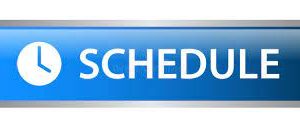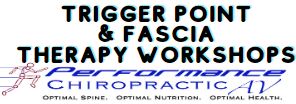Speed physical recovery
Why are so many sports and fitness enthusiasts including regular therapeutic massage as part of their conditioning programs? There is a growing awareness that a complete workout routine includes not only the exercise itself, but also caring for the wear-and-tear and minor injuries that naturally occur with strenuous movement. The physiological and psychological benefits of massage make it an ideal complement to a total conditioning program.
Who can benefit from regular massage? Anyone who routinely stretches their physical limits through movement such as running, cycling, hiking, swimming, dancing, tennis and other racquet sports, strength training and aerobics. In fact, anyone who experiences regular physical stress like mothers with small children, gardeners, or those who use their bodies strenuously in their work will find relief with therapeutic massage.
Massage is beneficial when starting a conditioning program, because it helps you get into good shape faster, and with less stiffness and soreness. It helps you recover faster from heavy workouts, and relieves conditions which may cause injury. Massage can be something to look forward to after a workout-a healthy reward.
What Happens When You Exercise?
Regular exercise increases vigor and promotes a general sense of well-being. If done in moderation, it can help relieve the effects of stress, and has been linked to decrease in psychological depression. The fun of sports and physical activity is one of the “healthy pleasures,” and greatly improves the quality of life.
Regular exercise produces positive physical results like increased muscular strength and endurance, more efficient heart and respiratory functioning, and greater flexibility. Exercise, along with a healthy diet, also results in less body fat and greater lean body mass. These are the components of health-related fitness.
These positive physical changes occur as the body gradually adapts to the greater demands put on it by regular exercise. The body improves its functioning to meet the challenges placed on it. Conditioning has been described as a process of pushing the physical limits (tearing down), recovery, and then building up to meet the new demands. Recovery is often overlooked, but is essential for the rebuilding phases, and to realizing the benefits of a conditioning program.
The “tearing down” phase of the adaptation process often involves stiffness and soreness, especially when the amount of movement is significantly increased from what the body has been used to in the past. Referring to post-exercise soreness, people often comment about finding muscles “I didn’t even know I had.”
Delayed muscle soreness (24-48 hours after exercise) may be caused by any of a number of different factors. Some possible causes are minor muscle or connective tissue damage, local muscle spasms that reduce blood flow, or a build up of waste products (metabolites) from energy production.
Trigger points or stress points may also cause muscle soreness and decreased flexibility. These points are specific spots in muscle and tendons which cause pain when stressed, and which may radiate pain to a larger area. They are not bruises, but are thought by some to be small areas of spasms. Trigger points may be caused by sudden trauma (like falling or being hit), or may develop over time from the stress and strain of heavy physical exertion or from repeated use of a particular muscle.
Heavily exercised muscles may also lose their capacity to relax, causing chronically tight (hypertonic) muscles, and loss of flexibility. Lack of flexibility is often linked to muscle soreness, and predisposes you to injuries, especially muscle pulls and tears. Blood flow through tight muscles is poor (ischemia), which also causes pain.
How Massage Helps
Recovery. Therapeutic massage helps the body recover from the stresses of strenuous exercise, and facilitates the rebuilding phase of conditioning. The physiological benefits of massage include improved blood and lymph circulation, muscle relaxation, and general relaxation. These in turn lead to removal of waste products and better cell nutrition, normalization and greater elasticity of tissues, deactivation of trigger points, and faster healing of injuries. It all adds up to relief from soreness and stiffness, better flexibility, and less potential for future injury.
In addition to general recovery, massage may also focus on specific muscles used in a sport or fitness activity. For example, areas of greater stress for runners and dancers are in the legs, for swimmers in the upper body, for tennis players in the arms. These areas are more likely to be tight, lose flexibility, and develop trigger points.
Overtraining. Adequate recovery is also a major factor in avoiding the overtraining syndrome. Overtraining is characterized by irritability, apathy, altered appetite, increased frequency of injury, increased resting heart rate, and/or insomnia. It occurs when the body is not allowed to recover adequately between bouts of heavy exercise. Therapeutic massage helps you avoid overtraining by facilitating recovery through general relaxation, and its other physiological effects.
Trouble spots. You may also have your own unique trouble spots, perhaps from past injuries. A massage therapist can pay special attention to these areas, monitor them for developing problems, and help keep them in good condition. An experienced massage therapist can also compliment treatment received from other health care professionals for various injuries.
For the Competitor
During competitions, such as tournaments and races, athletes push themselves to their limits, performing at maximum effort. At these times, sports massage is used to prepare for, and recover from the stresses of all-out effort.
Pre-event. Pre-event sports massage is given within the four hours preceding an event to improve performance and help decrease injuries. It is normally shorter (10-15 minutes) than a regular conditioning massage, and focuses on warming-up the major muscles to be used, and getting the athlete in a good mental state for competition. Certain massage techniques can help calm a nervous athlete, and others can be stimulating.
Inter-/intra-event. Inter- and intra-event massage is given between events or in time-outs to help athletes recover from the preceding activity, and prepare for the activity coming up. It is also short, and focuses on the major muscles stressed in the activity.
Post-event. Post-event sports massage is given after a competition and is mainly concerned with recovery. Recovery after competition involves not only tissue normalization and repair, but also general relaxation and mental calming. A recovery session might be 15 minutes to 1 ½ hours in length.
Some tournaments and races provide sports massage for competitors, or you may want to schedule an appointment before and/or after an event with your own massage therapist. You don’t have to be a professional athlete to benefit from therapeutic massage.
What Kind of Massage is Best?
Traditional western (e.g. Swedish) massage is currently the most common approach used for conditioning programs. It is frequently supplemented by other massage therapy approaches including deep tissue, trigger point work, and acupressure. Some massage therapists have special training in sports massage and greater experience working with athletes. Discuss your conditioning program with your massage therapist to choose the approach best suited for your needs.
Making the Most of Your Conditioning Massage
- Schedule your conditioning massage (30minutes to 1 ½ hours duration) for after your workout or on a rest day
- Cool down completely after your workout before getting massage.
- Take a shower, sauna, steambath, or Jacuzzi before a massage, if available. This will give a head start to the recovery and relaxation processes.
- Tell the massage therapist about your current activity, work-out and/or sport participation so she or he can tailor the massage to your unique needs. The massage therapist may want to talk to your personal trainer, aerobics teacher, or coach about your situation.
- Let the massage therapist know about upcoming competitions or events. It might affect their approach to an individual session.
- Tell the massage therapist about past or recent injuries which continue to cause problems or pain. The massage therapist may want to talk to your health care provider about your injuries either to help the healing process or avoid further damage.
- Give the massage therapist feedback on painful areas. These may need special care or attention.
- Depending on your general physical condition, first time massages may leave you slightly sore. It’s like exercise-your body may have to adjust to it. As tissues become healthier, you will appreciate deeper and more vigorous massage.
- Just like your regular exercise or training schedule, plan ahead for regular massage appointments. “Regular” means once-a-week to once-a-month.
References
Robert K. King. Performance Massage; Muscle Care for Physically Active People.Champaign, IL: Human Kinetics Publishers, 1993.
Bonnie Prudden. Myotherapy: Complete Guide to Pain-Free Living. New York: Ballentine Books, 1984.
Frances M. Tappan and Patricia J.Benjamin, PhD. Tappan’s Handbook of Healing Massage Techniques: Classic, Holistic, and Emerging Methods. San Mateo, Ca: Appleton & Lange, 1998.




FOLLOW US!